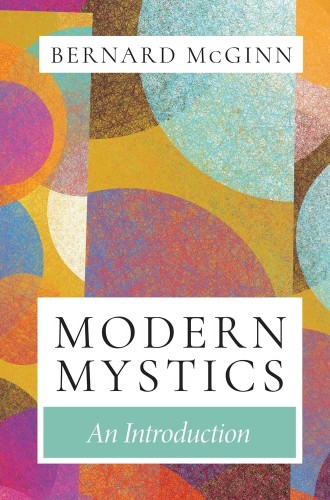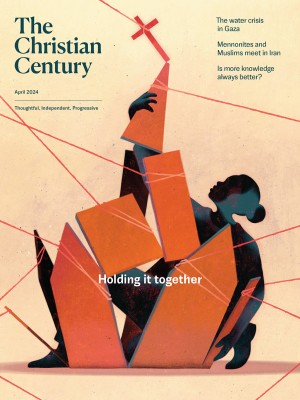Seeking the Divine in the secular age
The modern mystics profiled in Bernard McGinn’s new book don’t experience ecstatic visions, supernatural miracles, or paranormal phenomena.

Modern Mystics
An Introduction
A renewal of interest in meditation, spirituality, and mysticism is increasing, even as historic churches lament their own decline. Some Christians are finding conventional worship inadequate to address deep questions of meaning and vocation amid the suffering and anxieties of troubled times. Many seek the kind of transformation witnessed in the lives and writings of exemplary figures who existed at the margins of institutional churches. Their quiet protest implies that congregations and denominations might be renewed if they fostered deeper inward journeys to encounter God’s love beyond worn-out forms of outward conformity.
Bernard McGinn, who taught at the University of Chicago Divinity School until his retirement, has served this movement well with a lifetime of scholarship charting the lives and writings of the mystics (most famously in his multivolume The Presence of God: A History of Western Christian Mysticism). In this new book, he introduces ten 20th-century figures who brought together lives of contemplation and action in an increasingly secular world.
Read our latest issue or browse back issues.
Protestant readers will learn about figures rarely mentioned in popular spiritual writings, like Charles de Foucauld, Thérèse of Lisieux, Elisabeth of the Trinity, and Henri Le Saux. Three of the figures, Edith Stein, Simone Weil, and Etty Hillesum, were Jews, two of whom perished in the Holocaust. Dag Hammarskjöld, the only Protestant, is best known as the first secretary general of the United Nations. Pierre Teilhard de Chardin, a Jesuit paleontologist whose writings were mostly suppressed by his order during his lifetime, brought a dynamic cosmological vision to the mystical quest. Thomas Merton, the best-known figure, is revealed as a person of contradictions, seeking the solitude of the monastery while writing voluminously for a wider public and correspondents who kept seeking him out.
One theme that emerges in Modern Mystics is that authentic modern mysticism is not about ecstatic visions, supernatural miracles, or paranormal phenomena. Seeking the divine presence in an age when atheism, agnosticism, and secular pursuits have become well established means testifying to the frequent absence or eclipse of God from history and social life.
At the same time, McGinn’s profiles of these figures show how their lives witness to an inner hunger not satisfied by affluence, romance, political power, or social achievements. Sometimes in friendship with spiritual guides and other seekers and sometimes in obscure solitude, these figures became pioneers of an inner space where the sacred was hidden amid the debris of world wars and economic upheavals. Their writings, which McGinn helpfully introduces with primary and secondary bibliographies, will strike some as original and creative and others as heretical. It is little wonder that some of these figures left their journals and letters to others to publish after their deaths.
Readers may wish McGinn had chosen other figures to profile. The brief references to Howard Thurman and Albert Schweitzer in the chapter on Hammarskjöld may feel tantalizingly inadequate to some. Others may miss Rudolf Otto, Martin Buber, Evelyn Underhill, A. W. Tozer, Dorothee Sölle, Henri Nouwen, Wayne Teasdale, Howard Rice, Matthew Fox, or Belden Lane. The profusion of recent writings by and about mystics shows that we are living in a time of spiritual renewal despite the decline in church participation. Modern Mystics reminds the church that it needs patience as it indwells the eclipse and manifestation of God, trusting that a wider renewal of religious life is possible in this century.
Some readers may be concerned that the marginality of mystics to the institutional church encourages pantheism (see chapter 4 on Teilhard de Chardin), excessive forms of hyper-spirituality, and moral absolutism (see chapter 7 on Weil). Distinctions between pantheism, panentheism, spirit as creature, and Spirit as Creator can be lost in the poetry of mystical union. In the hands of authoritarian religious and political leaders, conflating the Divine and the human poses dangers to naive followers who fail to “discern the spirits.” McGinn raises critical questions about theology and character in his profiles of the mystics, alerting readers to the need for discernment in the spiritual life.
McGinn criticizes John Calvin, Albrecht Ritschl, and Adolf von Harnack for disposing members of the Lutheran and Reformed traditions against “most mystics.” Still, a close reading of Calvin shows his debt to the Western mystical tradition at two points: he believed that the ultimate ground of the Bible’s authority comes through the illumination of the Holy Spirit (Institutes 1, chap. 7), and he writes frequently about union with Christ (this appears about 30 times, scattered throughout the Institutes). Out of the Reformed tradition, Jonathan Edwards, Friedrich Schleiermacher, James Loder, and others emerged whose writings celebrate the immanent work of God’s Spirit that renews personal and corporate life in surprising ways.
What are we to make of McGinn’s intriguing and haunting figures? Our lives often conceal a spiritual dryness that isn’t easily slaked. At the conclusion of a sermon, semester, or term of service, religious leaders may wonder if we have truly encountered the God whom we shower with so many words. Attending to the holy dimension of life through nature, neighbors, and spiritual practices—as McGinn’s figures model through their biographies and writings—may help us uncover an essential element that was missing all along. As Karl Rahner wrote in his Theological Investigations, “the devout Christian of the future will either be a ‘mystic,’ one who has experienced ‘something,’ or he will cease to be anything at all.”






